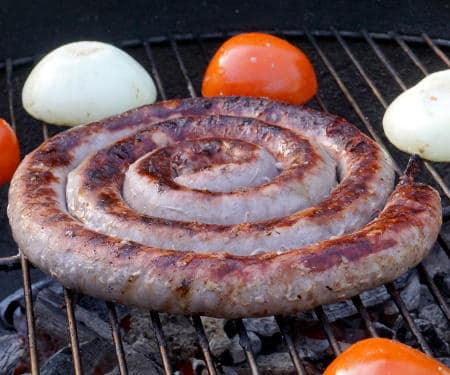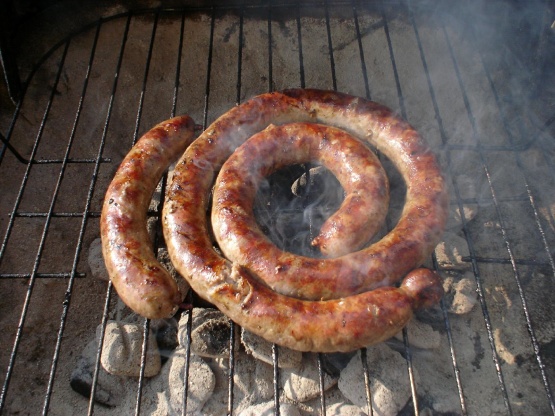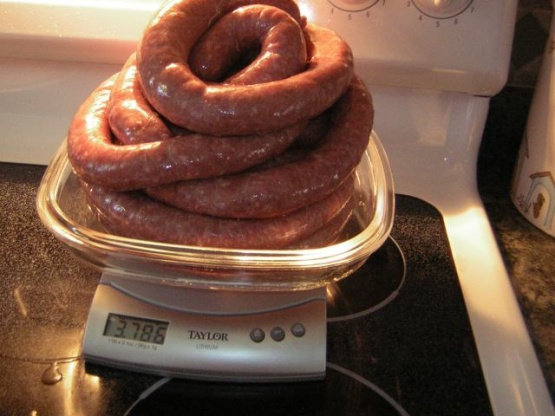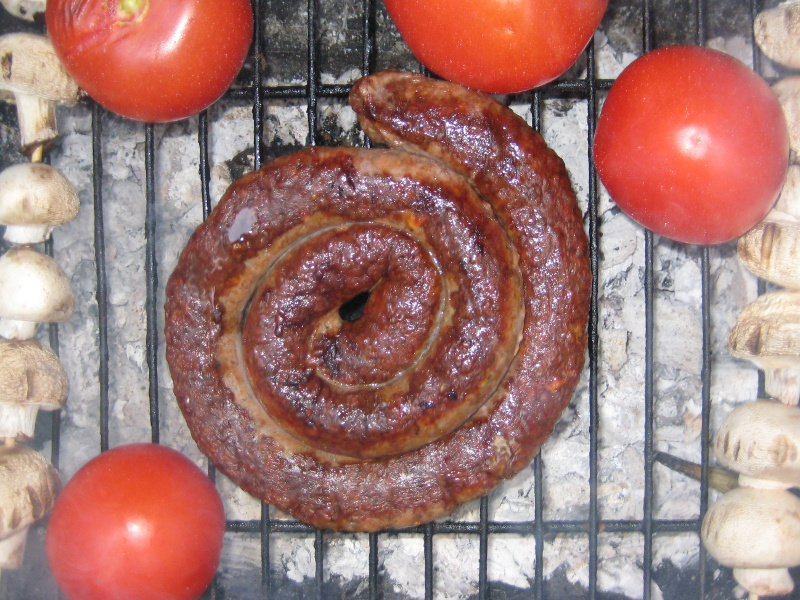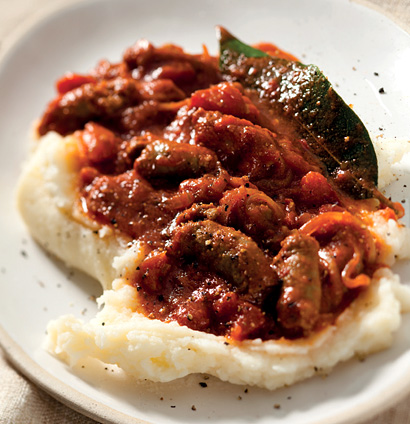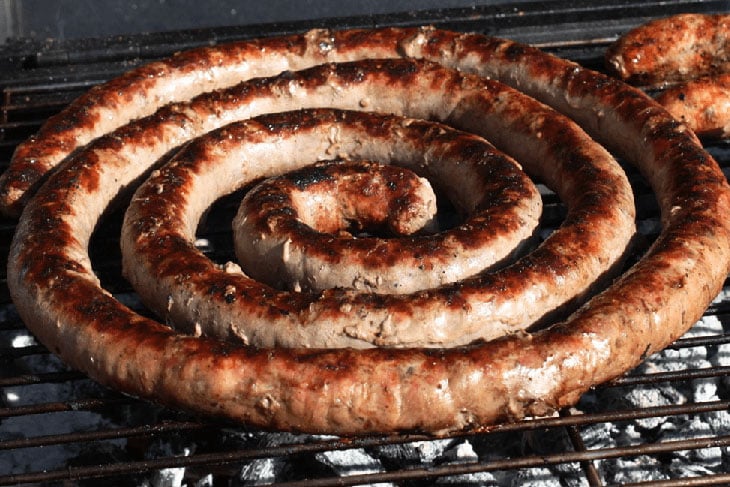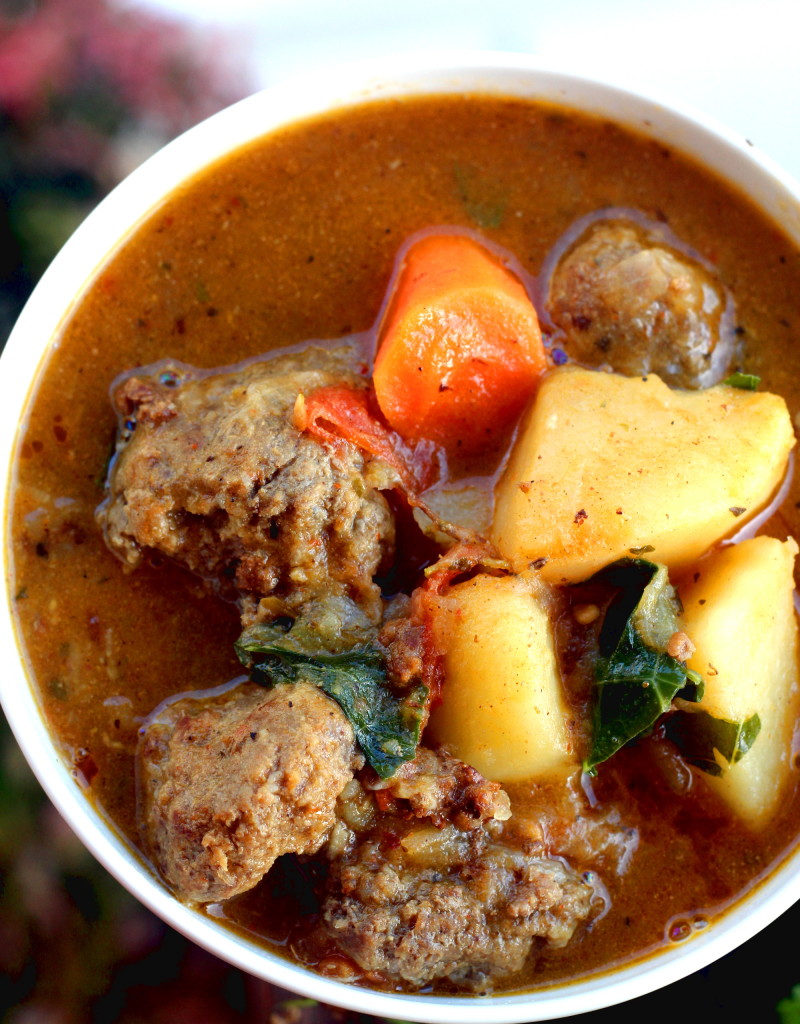Boerewors
wors
Boerewors is a type of sausage which originated in South Africa. It is an important part of South African, Zimbabwean cuisine and is popular across Southern Africa. The name is derived from the Afrikaans words boer (literally, a farmer) and wors ('sausage'). According to South African government regulation, boerewors must contain at least 90 percent meat or fat from beef, pork, lamb or goat. The other 10% is made up of spices and other ingredients. Not more than 30% of the meat content may be fat. Boerewors may not contain offal other than the casings, or any mechanically separated meat (as recovered through a process where meat and bone are mechanically separated). Boerewors is made from coarsely minced beef, minced pork, lamb and or goat. When locally available antelopes such as springbok or oryx are included, the sausage must be labeled with the species from which the meat originates. It also contains spices (usually toasted coriander seed, black pepper, nutmeg, cloves and allspice). Like many other forms of sausage, boerewors may contain a high proportion of fat, and is preserved with salt and vinegar, and packed in edible sausage casings, which are the only part of the sausage which may be offal. Traditional boerewors is usually formed into a continuous spiral. It is often served with pap (traditional South African porridge / polenta made from mielie-meal). Boerewors is also very common throughout Namibia, Botswana, Mozambique and Zimbabwe as well as with expatriate South African communities worldwide.
Source: Wikipedia
Recipes




